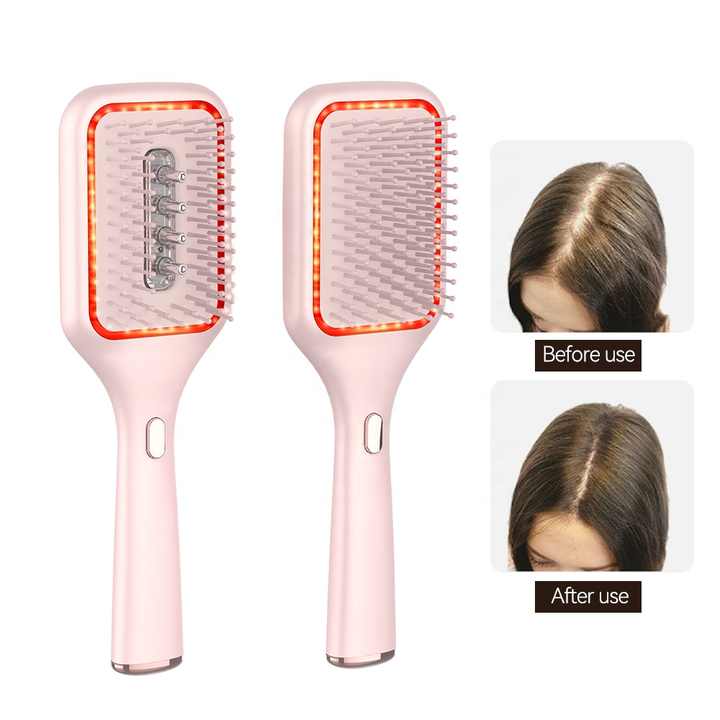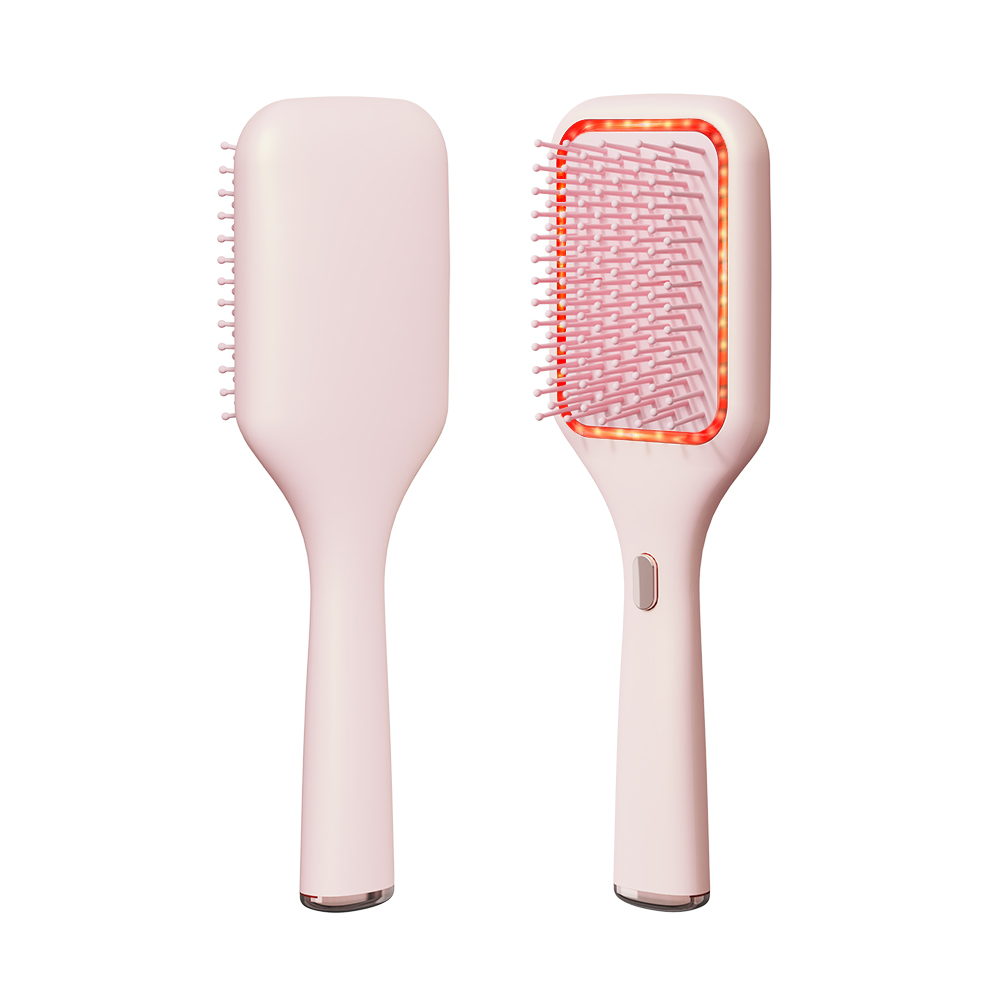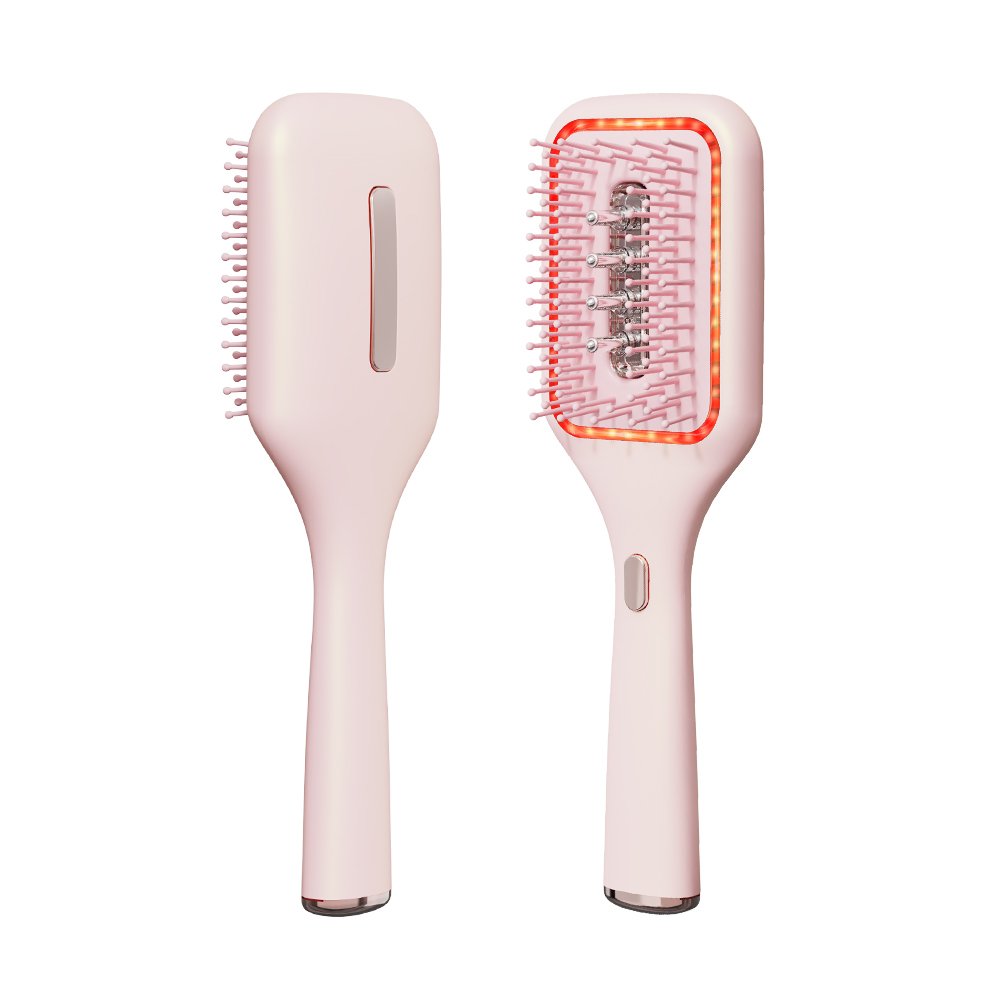Does Hair Care Device Really Work? A Scientific Breakdown
Summary
The article "Does Hair Care Device Really Work? A Scientific Breakdown" examines the efficacy of various hair care devices, exploring their scientific foundations and the controversies surrounding their effectiveness. As consumers increasingly seek effective solutions for hair health and styling, a multitude of devices—including hair styling appliances, low-level laser therapy tools, AI-powered gadgets, and sustainable products—have emerged in the market, each claiming unique benefits. Notably, the application of advanced technologies such as red light therapy and AI-driven analyses is reshaping consumer expectations and experiences in hair care.
Despite the innovative advancements, the effectiveness of many hair care devices remains contentious. Research has highlighted mixed results, particularly regarding laser therapy, where studies vary in sample size and design, raising questions about the reliability of the claims made by manufacturers. Critics argue that while some devices show promise in promoting hair growth or improving hair health, the scientific validation behind these claims is often insufficient. Additionally, potential risks associated with treatments, including cardiovascular concerns and side effects from topical applications, warrant careful consideration.
The article further delves into the importance of scientific validation in the hair care industry, where consumer skepticism toward marketing exaggerations is on the rise. As consumers demand evidence-based results, brands that focus on transparent practices and robust scientific support are more likely to thrive in this competitive landscape. This shift not only redefines consumer expectations but also elevates the importance of research and development within the beauty sector.
In summary, "Does Hair Care Device Really Work? A Scientific Breakdown" presents a comprehensive overview of the current state of hair care technologies, emphasizing the need for rigorous scientific inquiry and consumer education in an ever-evolving market. As consumers navigate their options, the discussion highlights both the potential and limitations of contemporary hair care devices in achieving desired outcomes.
Types of Hair Care Devices
Hair Styling Appliances
Recent studies in hair care have explored various hair styling appliances, emphasizing their effectiveness in achieving desired hair looks while maintaining hair health. Modern styling tools feature advanced technologies, including ceramic, tourmaline, and ionic components, which help manage heat levels effectively to prevent damage to the hair. Notable products include specialized hair dryers designed for specific hair types, such as those offered by Tracee Ellis Ross' hair care line, Pattern, which cater specifically to curly hair with innovative attachments.
Laser Therapy Devices
Low-level laser therapy (LLLT) machines have emerged as a promising option for effective hair growth and treatment. These devices utilize specific wavelengths of light to stimulate hair follicles, promoting regrowth and improving hair density. Red light therapy devices, which are a subset of LLLT, include various forms such as masks and beds, each designed to enhance skin and hair healing through increased mitochondrial function.
AI-Powered Devices
Artificial Intelligence (AI) has made significant strides in the hair care industry, offering personalized hair analysis tools that assess hair type, condition, and environmental factors. These tools leverage machine learning to provide customized product recommendations and styling tips tailored to individual needs. Innovations in AI also include smart personal care devices that track grooming routines and suggest adjustments for improved effectiveness.
Sustainable Hair Care Tools
With an increasing focus on environmental sustainability, the hair care industry is witnessing the emergence of eco-friendly products and practices. Devices designed with minimal packaging and made from natural or organic materials are gaining popularity. Sustainable practices also advocate for the use of hair care products that do not contribute to plastic waste, thus promoting a healthier planet alongside hair health.
Therapeutic Devices
Apart from aesthetic purposes, some hair care devices also serve therapeutic functions. For instance, devices that employ heat management technologies ensure safe styling without causing scalp burns or hair damage. The use of innovative materials and designs enhances the user experience, making regular hair care routines safer and more effective.
Mechanisms of Action
Wnt/b-Catenin Pathway in Hair Follicle Regeneration
The Wnt/b-catenin pathway is one of the primary molecular responses activated by skin injury, playing a crucial role in the regeneration of hair follicles. When dermal papillae cells are stimulated by wounding, they release mediators that signal through the Wnt pathway, which facilitates paracrine communication between dermal papillae cells and bulge cells. This activation prompts stem cells to initiate tissue repair and promote the formation of new epithelial structures, including hair follicles, ultimately leading to both tissue regeneration and new hair growth.
Red Light Therapy (RLT)
Red light therapy (RLT) has gained attention for its potential applications in promoting hair health and stimulating hair growth. This therapy involves the use of low-power red laser light, which is believed to enhance mitochondrial function within cells, leading to increased energy production.
Enhanced Blood Flow and Nutrient Delivery
RLT is thought to act as a vasodilator, relaxing the vascular smooth muscle tissue to improve blood circulation to the hair follicles. This enhanced blood flow helps deliver essential oxygen and nutrients necessary for hair growth.
Cellular Responses and Protein Synthesis
Exposure to red light has been shown to boost ATP production and promote protein synthesis in hair follicle cells. Specifically, studies have indicated that RLT increases the proliferation of Ki-67-positive cells, a marker associated with cell growth and regeneration, which suggests its role in stimulating hair follicle activity.
Synergistic Effects with Other Treatments
Research indicates that combining RLT with treatments like minoxidil may produce better results than either treatment alone. The safety and efficacy of this combination suggest a promising approach for those experiencing hair thinning or loss.
Other Mechanisms Influencing Hair Health
In addition to Wnt signaling and RLT, various biological processes impact hair health and regeneration:
Cytokine and Growth Factor Modulation
RLT and other treatments can trigger downstream effects that involve the modulation of cytokines, growth factors, and inflammatory mediators, which play significant roles in hair follicle development. For instance, increased levels of fibroblast growth factors can stimulate collagen synthesis, further supporting hair health and regeneration.
Scalp and Hair Barrier Support
Innovative formulations, such as Croda's Sphingo'Hair Drypure, focus on enhancing the structural integrity of both the scalp and hair barriers. These products aim to reduce scalp flaking, improve moisture balance, and enhance the overall health and appearance of hair, emphasizing the importance of scalp care in hair rejuvenation strategies.
Scientific Studies and Evidence
The efficacy of various hair care devices, particularly those utilizing red light therapy (RLT), has been the subject of numerous studies, although the results and conclusions are often mixed. Red light therapy is an emerging treatment that shows potential for certain conditions related to hair growth, but it is still under investigation and lacks definitive evidence for most claimed uses.
Limitations of Current Research
Most studies on red light therapy are characterized by small sample sizes, which can limit the generalizability of the findings. Furthermore, while some studies have demonstrated a stimulating effect of low-level laser therapy (LLLT) on hair growth in both men and women, the overall effectiveness remains to be thoroughly established due to the ongoing nature of research and the need for larger, more rigorous studies.
The Need for Robust Study Designs
The gold standard for determining the effectiveness of a treatment is a randomized, placebo-controlled trial. This design allows researchers to compare the effects of the treatment against a placebo, ensuring that any observed benefits can be attributed to the therapy itself rather than external factors. However, many existing studies do not meet these rigorous criteria, which raises questions about their validity and reliability.
Emerging Evidence
Despite the limitations, some studies indicate positive outcomes associated with red light therapy. For example, a review of literature has highlighted the potential of red light therapy to alleviate pain related to inflammation, with some studies reporting favorable results. Additionally, red light therapy has been medically accepted for uses in photodynamic therapy, particularly for treating skin conditions such as skin cancer and psoriasis, further supporting its potential therapeutic benefits.
Safety Considerations
Red light therapy is generally considered safe when applied correctly, though there are some risks involved, particularly with high-intensity treatments. Instances of skin blistering and redness have been reported in clinical trials, and precautions such as protective goggles are advised to prevent eye damage. Importantly, red light therapy does not involve ultraviolet rays, which are linked to skin cancer, alleviating some concerns associated with other light-based treatments.
Benefits of Hair Care Devices
Hair care devices have become increasingly popular, offering a range of benefits that enhance the overall effectiveness of hair care regimens. These devices leverage advanced technology and innovative design to cater to individual needs, resulting in improved hair health and styling efficiency.
Enhanced Hair Health
Recent clinical studies demonstrate that specific hair care devices can lead to noticeable improvements in hair density and thickness. For instance, a pivotal three-month study indicated that 80% of participants experienced enhancements in hair growth, while 76.67% reported new hair growth, and 70% noted faster-growing existing hair. This efficacy is attributed to formulations that include beneficial ingredients, such as Oryza Sativa (Rice) Bran Water and prebiotic components that nourish the scalp and improve hydration.
Improved User Experience
Modern hair care devices prioritize user convenience and ease of use. Features such as adjustable heat settings, ergonomic designs, and intuitive controls make styling more accessible, allowing users to achieve salon-quality results at home. Additionally, multifunctional devices that combine the capabilities of various tools into one, such as drying, straightening, and volumizing, not only save time and space but also encourage creative styling options.
Integration of Smart Technology
The incorporation of smart technology into hair care devices is revolutionizing the industry. These innovations facilitate a personalized approach to hair care, where devices can adapt to individual hair types and needs. AI-driven features can detect hair condition and adjust settings accordingly, ensuring optimal styling while promoting hair health.
Sustainability and Eco-Friendliness
With growing consumer demand for sustainable options, many hair care brands are developing energy-efficient devices made from recyclable materials. These eco-friendly innovations not only appeal to environmentally conscious users but also align with broader trends in the beauty industry aimed at reducing environmental impact.
Influencer and Community Impact
The role of social media in promoting hair care devices cannot be understated. Viral trends and influencer recommendations on platforms like Instagram and TikTok significantly shape consumer behavior, driving interest in new products and techniques. This community engagement fosters a sense of authenticity and trust, encouraging consumers to experiment with advanced hair care technologies.
Risks and Limitations
While hair care devices, including those used for light therapy and topical applications, offer potential benefits for hair growth and maintenance, they also carry certain risks and limitations that users should be aware of.
Cardiovascular Risks
One of the less common yet concerning risks associated with some oral medications, such as minoxidil, is the potential for cardiovascular complications. Specifically, there are reports of pericardial effusion and cardiac tamponade, which can manifest as intense chest pains and breathing difficulties. These complications, however, have primarily been documented in case studies rather than extensive clinical trials, making the overall risk less clear but still significant for those with pre-existing cardiovascular conditions.
Side Effects of Oral Medications
Oral medications like finasteride, commonly used to treat hair loss, are generally considered safe but can have side effects. Approximately 2% of men may experience decreased libido, and about 1% may encounter erectile dysfunction or ejaculation issues. Notably, these adverse sexual effects may be dose-dependent, with higher doses for benign prostatic hyperplasia (BPH) not directly translating to lower doses prescribed for hair loss. It's crucial for patients to consult with their doctors regarding any underlying health conditions that could interact negatively with these medications.
Topical Application Discomfort
For those using topical solutions like minoxidil, side effects are usually minimal but can include scalp irritation and mild discomfort. Users have reported that the solution form of minoxidil is more likely to cause adverse reactions than the foam version, which is easier to apply and less irritating due to the absence of certain chemicals like propylene glycol. Patients are advised to wash their hands thoroughly after application and avoid touching the treated area until it has completely dried to prevent unwanted hair growth in unintended areas.
Risks of Red Light Therapy
Red light therapy (RLT) presents its own set of risks. While it has shown promise in improving hair density, improper use can lead to issues such as inflammation, tenderness of the scalp, or even reduced effectiveness over time due to cellular fatigue. Users with sensitive skin may experience increased irritation, while direct exposure to high-intensity light can cause eye strain or long-term retinal damage if protective measures are not taken.
Combination Treatments
Combining multiple treatment modalities—such as oral medications, topical applications, and red light therapy—might yield more significant results. However, this approach carries the downside of complicating the identification of which treatment is most effective or responsible for any adverse effects. Consequently, patients might face the risk of having to discontinue all treatments to pinpoint issues, leading to potential loss of progress and increased financial investment.
Consumer Considerations
The modern consumer landscape in the beauty and personal care sector is evolving rapidly, marked by an increasing demand for products that not only promise but also deliver tangible results. Consumers are now equipped with a greater understanding of scientific principles, leading to a shift towards evidence-based products that can substantiate their claims. This transformation emphasizes that proof now outweighs mere promises in the marketplace. As noted by Johnny Cordiner, CEO of Phenotypeca, there is a growing expectation for hair and skin care products to surpass current technological limitations, necessitating continuous innovation to meet consumer aspirations.
The Importance of Scientific Validation
Today's consumers are increasingly skeptical of marketing exaggerations and seek out products that demonstrate measurable effectiveness. This trend is visible across various sectors, including luxury, beauty, and wellness, where brands like K18 have gained popularity by focusing on scientifically-backed innovations that offer real, verifiable results. The preference for products that are not only effective but also validated by independent testing signifies a shift towards scientific literacy as a competitive advantage in marketing strategies.
Shifting Luxury Standards
In this context, luxury in beauty products is being redefined. It is no longer solely about price or exclusivity; instead, it is characterized by performance and effectiveness. Consumers are now drawn to brands that can deliver high-quality results consistently, transforming scientific achievements into a new form of status symbol within the luxury sector.
Product Strategy and Consumer Trust
Brands like K18 exemplify successful retail strategies by avoiding market saturation and focusing on a select range of effective products, such as the K18 Leave-In Molecular Repair Hair Mask. This approach communicates a clear message to consumers: the brand is dedicated to delivering excellence in a specific area rather than spreading resources too thinly across numerous products. Such clarity fosters trust and confidence among consumers, who are increasingly wary of marketing noise and seek straightforward, effective solutions.
Lessons for the Future
The success of brands emphasizing scientific validation imparts important lessons for various industries beyond beauty.
- Substance over Storytelling: Consumers now prioritize tangible results over compelling narratives.
- Scientific Literacy: A thorough understanding of scientific processes enhances credibility in marketing efforts.
- Simplicity with Depth: While simplicity in messaging is essential, it must be backed by a robust understanding of product efficacy.
- Specialization vs. Saturation: Brands that specialize and maintain quality are more likely to succeed in a market weary of excess.
Ultimately, the key to consumer loyalty lies in building trust through transparency and proven performance, establishing a foundation for success in the evolving landscape of hair care and beyond.
 English
English Español
Español Português
Português Pусский
Pусский Français
Français Deutsch
Deutsch 日本語
日本語 한국어
한국어 Italiano
Italiano عربى
عربى


